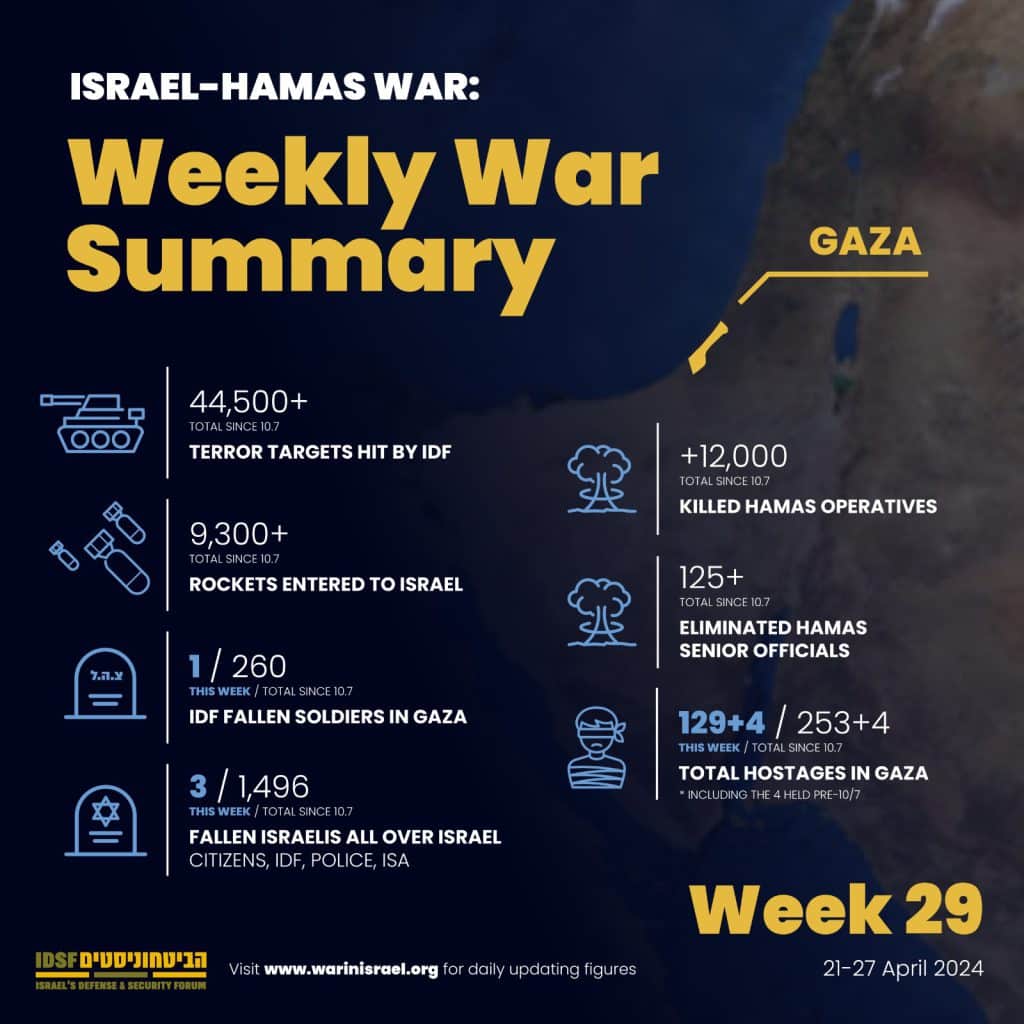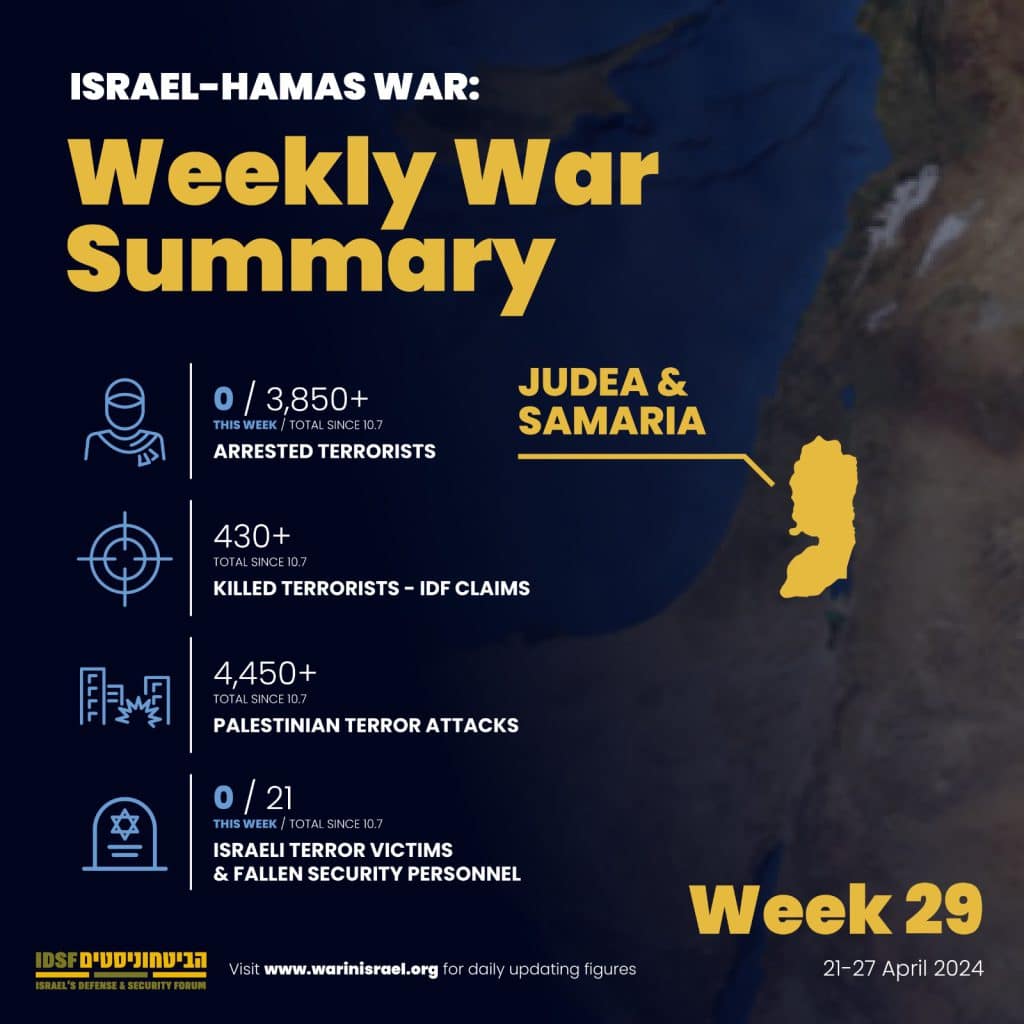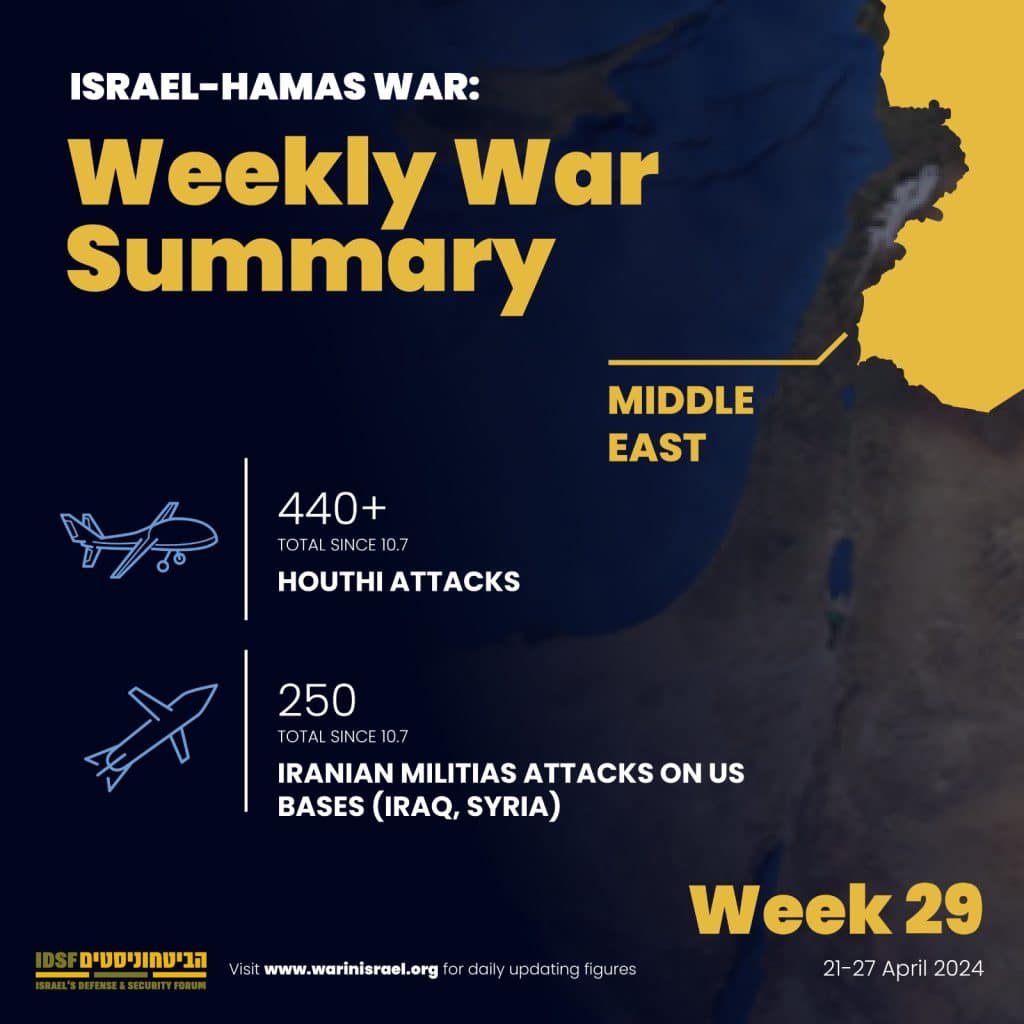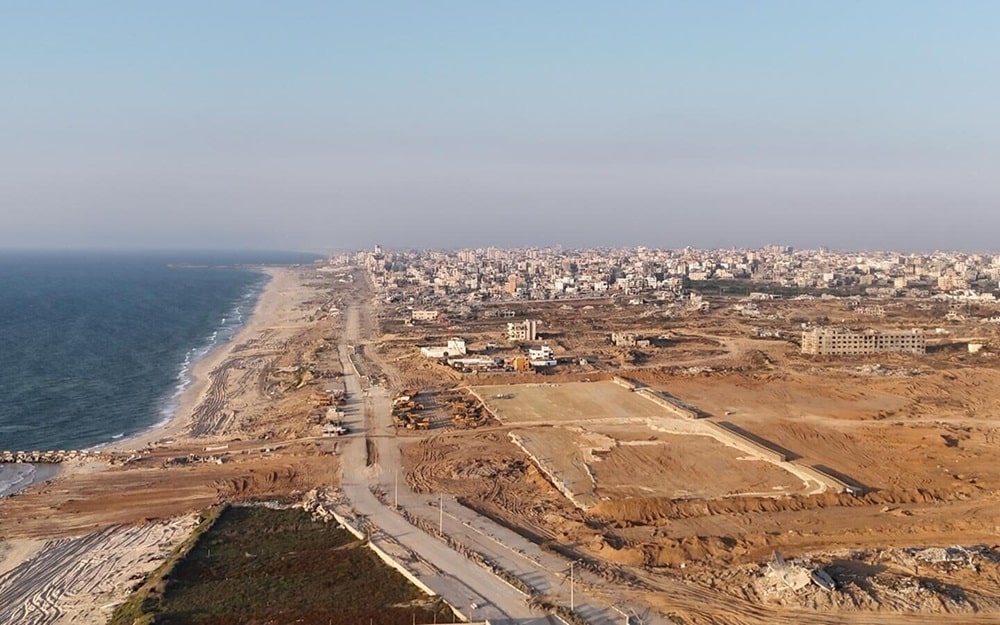
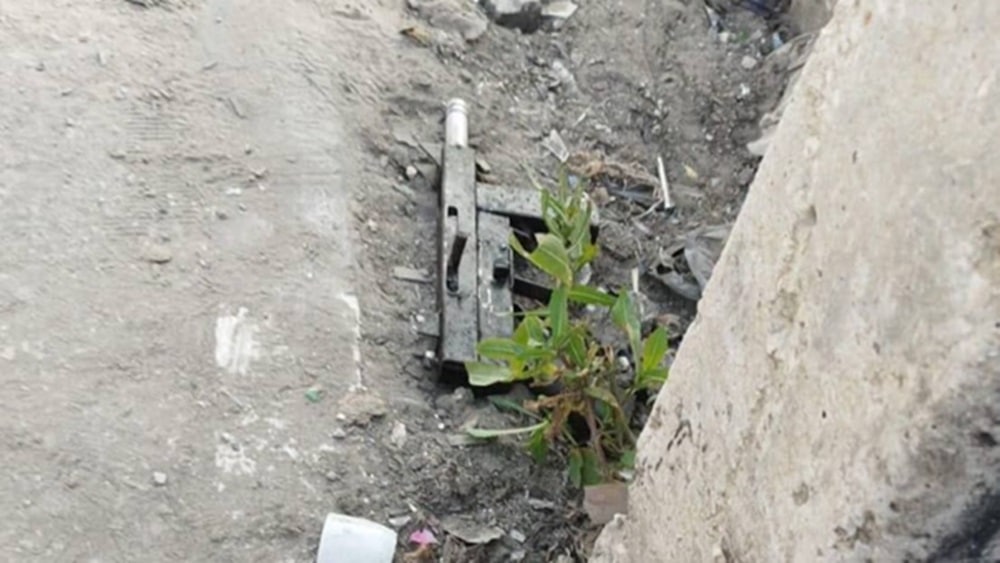
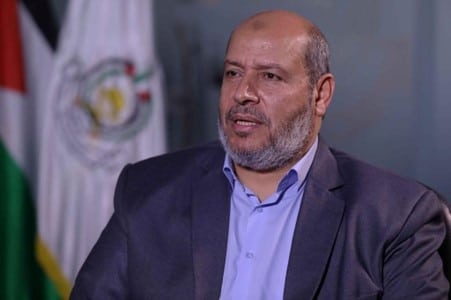
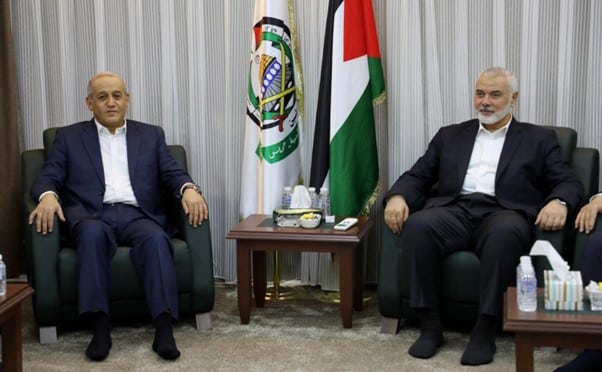
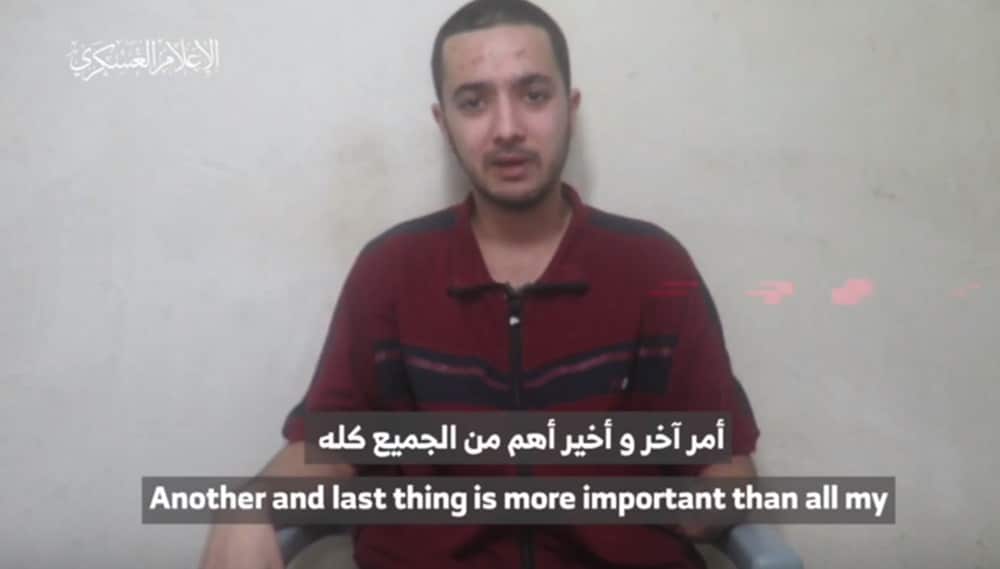
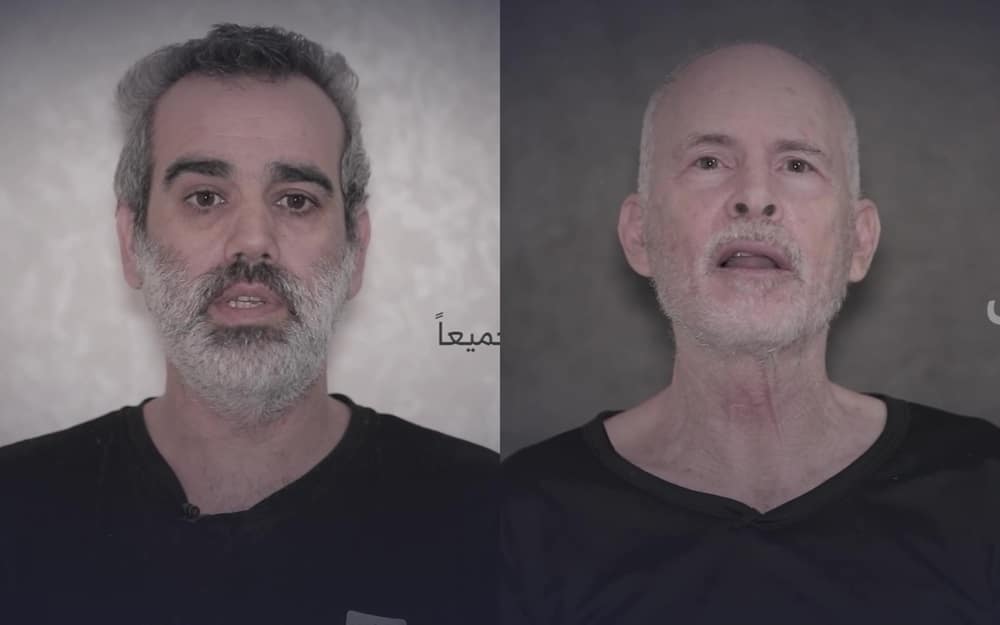
Overview
- The Israel Defense Forces (IDF), through COGAT (Coordinator of Government Activities in the Territories), have approved a new initiative by the United States Central Command (CENTCOM) to create a logistical corridor from the coast of Gaza (JLOTS – Joint Logistical Over-the-Shore). This initiative aims to streamline and expand the entry of humanitarian aid into the Gaza Strip through the US’s military floating pier.
- Israel is building the humanitarian infrastructure necessary for the evacuation of Rafah’s civilian population in the Khan Yunis area, including tents, with cooperation of Western humanitarian NGOs, Egypt, and the United Arab Emirates.
- Despite the IDF’s initial maneuver which led to the dismantling of 12 Hamas battalions in northern Gaza, strong pockets of resistance remain as well as evidence of the reorganization of militants. There were five rocket launches towards Sderot and Zikim from Beit Lahiya, located north of Gaza City.
- As Israel signals that it is serious about the Rafah operation, Hamas has reportedly moderated its demands in the hostage negotiations, possibly in an attempt to appear more reasonable to the international community. Khalil al-Haya, a senior member of Hamas’ political wing, considered the deputy of Yahya Sinwar, said in an interview with the AP that the terror organization would agree to a five-year ceasefire with Israel and would also agree to disarm if a Palestinian state is established based on the 1967 borders.
- Two 17-year-old Palestinian terrorists from Hebron ran over Jewish worshipers with their car near a synagogue in the Romema neighborhood of Jerusalem, and fled after their machine gun jammed preventing a massacre.
- An official North Korean delegation, led by cabinet member and Minister of International Trade Yun Jong Ho visited Iran for the first time since the time of the coronavirus pandemic.
- Iran and Russia signed a Memorandum of Understanding (MoU) to enhance cooperation on security issues.
- The US, UK, and Canada imposed coordinated sanctions on Iran’s missile industry, following its unprecedented attack on Israel on April 14.
- The US Treasury Department’s Office of Foreign Assets Control (OFAC) imposed sanctions on two companies and four individuals involved in cyber activities under the command of the Revolutionary Guards.
- Amid fears of rumored plans by the International Criminal Court to issue arrest warrants against Prime Minister Benjamin Netanyahu and other top Israeli officials including Defense Minister Yoav Gallant and Chief of Staff of the IDF Maj Gen Herzi Halevi, Netanyahu spoke with President Biden about this concern. Netanyahu said in a statement that any decision by the court would not affect Israel’s actions.

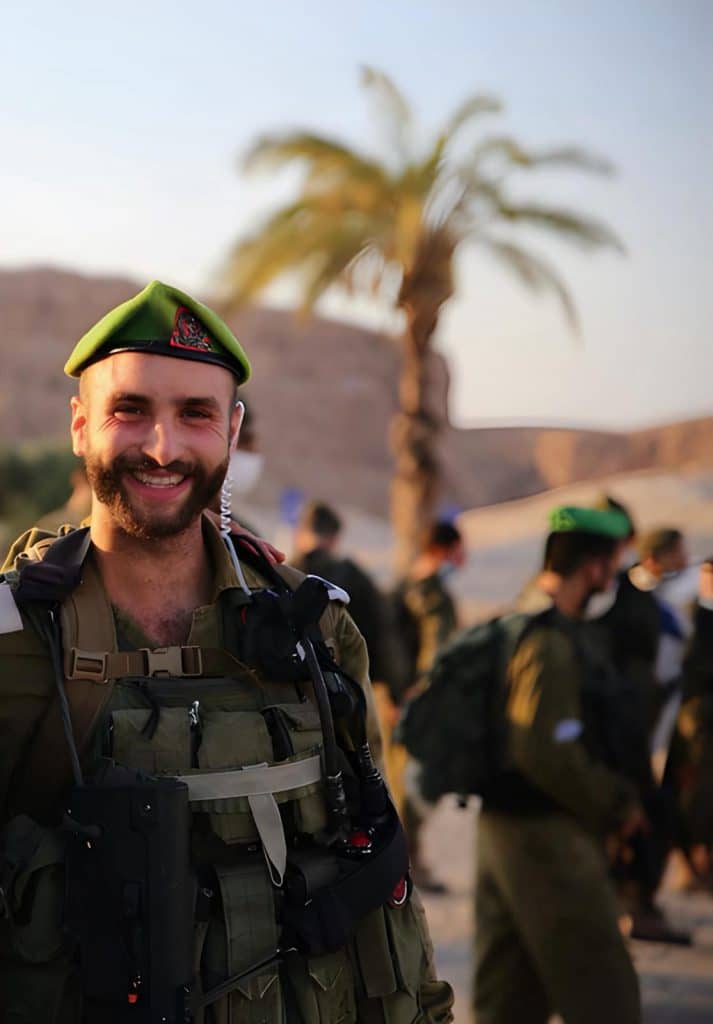
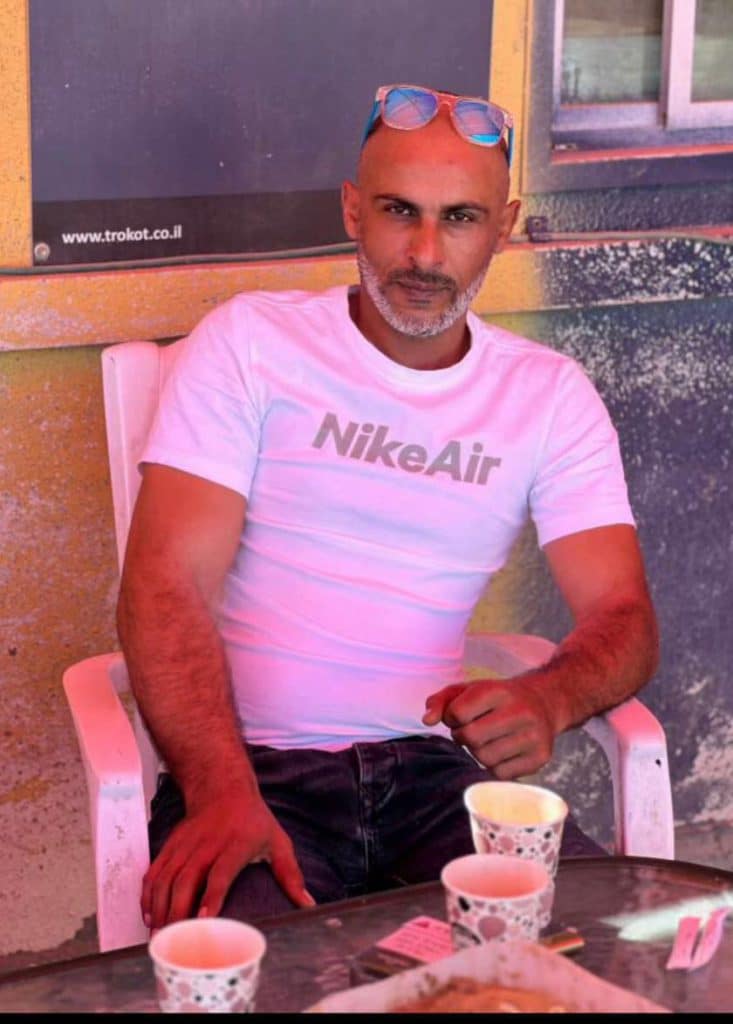

Gaza Strip
Operational
- The Israel Defense Forces (IDF), through COGAT (Coordinator of Government Activities in the Territories), have approved a new initiative by the United States Central Command (CENTCOM) to create a logistical corridor from the coast of Gaza (JLOTS – Joint Logistical Over-the-Shore). This initiative aims to streamline and expand the entry of humanitarian aid into the Gaza Strip through the US’s military floating pier. The IDF will provide security and logistical support for the initiative including the construction and securing of the pier. Hamas has already tried to attack IDF troops doing the logistical work and has warned against foreign forces in Gaza, implying that Hamas will try to attack the pier.
- COGAT has documented that there are currently, 26 bakeries producing nearly 5 million pitas per day throughout the Gaza Strip.
After fortifying the Nezarim corridor axis and establishing its defenses, two reserve brigades, Yiftach and Carmeli are set to replace Division 162 in Northern Gaza, which will be redeployed south for maneuvers near Rafah. The Nahal Brigade has withdrawn from the Gaza Strip after months of continuous fighting since the beginning of the ground operation. Hamas and other factions attacked the troop rotation, firing mortars at the corridor and near the American pier, damaging engineering equipment used in constructing the new port.
Hamas and other terrorist groups are making a final attempt to disrupt the establishment of the pier. The U.S. is actively constructing this pier a few kilometers north of the Nezarim corridor. The new port is expected to handle about 40% of the daily necessities for the Gaza Strip. The American team, consisting of several hundred soldiers, will be stationed either on a British amphibious ship or in Cyprus (not in the Gaza Strip). The food and equipment, inspected by Israel and the U.S. in Cyprus, will be transported by sea to the pier and then distributed by truck to logistic centers in central Gaza and Khan Yunis. From there, Western humanitarian organizations, Egypt, and the UAE will distribute the aid in tent cities currently being set up for evacuees from Rafah.
However, the US and coalition partners have not presented a realistic plan to prevent Hamas from gaining control of the distribution of the humanitarian aid. Any scenario where the Gaza civilian population is dependent upon Hamas, will help to rehabilitate Hamas in the eyes of the general public and is thereby a threat to Israel’s national security as it will likely prolong the war.
The Rafah Offensive
According to the Wall Street Journal, Israel is in the midst of preparing for military operations in Rafah. Israel is building the humanitarian infrastructure necessary for evacuating Rafah’s civilian population in the Khan Yunis area, with cooperation from Western humanitarian NGOs, Egypt, and the United Arab Emirates. The evacuation is expected to last between two to three weeks. Rafah, which currently houses 1.4 million Gazans, measures only 65 square kilometers, while the Khan Younis area is 108 square kilometers, suggesting that the evacuation could proceed without relocating residents to the north or central Gaza, where fighting continues.
The US estimates that the completion of the Rafah operations is expected to take about six weeks. U.S. Secretary of State Blinken has reiterated his opposition to the maneuver, advocating for surgical operations that could last for months, which he suggests would prevent a humanitarian disaster. Israel plans to gradually execute the battle while evacuating the population.
The IDF Chief of Staff and the head of the Shin Bet visited Egypt to coordinate expectations with the Egyptians, including Israel’s plan to take over the Philadelphi Corridor. So far, approximately 250,000 locals have moved north towards the Khan Yunis area, in advance of the operation.
The New York Times’ commentator, and so-called White House “whisperer” Thomas Friedman published an article in which he said that Israel’s offensive in Rafah could be potentially met with US withholding some aid to Israel. This is widely viewed as an effort to demonstrate that the White House retains some tools to restrain Israel, even after Congress approved over $17 billion of aid to Israel, out of a total of $26 billion package to Israel and Gaza. According to Friedman, the Biden team is working on a comprehensive Saudi-Israeli normalization deal that would include a defense pact– that Friedman argues could only take place if Israel does not pursue a full-blown offensive in Rafah.
Pockets of Resistance in Northern Gaza
In Beit Hanoun, the Zeitoun neighborhood, and Beit Lahiya, there has been an intensification of exchanges of fire and encounters with militants. Despite the IDF’s initial maneuver which resulted in the dismantling of 12 Hamas battalions in northern Gaza, strong pockets of resistance remain as well as evidence of the reorganization of militants. There were five rocket launches towards Sderot and Zikim from Beit Lahiya, located north of Gaza City.
To date, only 2 out of 5 of Gaza’s military brigades have been eliminated, and only one of the four senior leaders and two out of five members of Hamas’ military leadership, meaning most of the senior leadership is still alive, even hardening their demands in the negotations.
The Hamas Hostage Deal
As Israel signals that it is serious about the Rafah operation, Hamas has reportedly moderated its demands in the hostage negotiations, possibly in an attempt to appear more reasonable to the international community.
Khalil al-Haya, a senior member of Hamas’ political wing, considered the deputy of Yahya Sinwar, said in an interview with the AP that the terror organization would agree to a five-year ceasefire with Israel and would also agree to disarm if a Palestinian state is established based on the 1967 borders. Al-Haya stated that Hamas wants to join the PLO, which is recognized as the “legitimate” representative of the Palestinians by the international community, and to establish a united Palestinian government in Judea, Samaria, and the Gaza Strip.
He added that as part of a future agreement with Israel, Hamas would agree to “a fully sovereign Palestinian state in the West Bank and Gaza Strip, alongside the return of Palestinian refugees to their homes (right of return), in accordance with international decisions.” According to him, if this happens, “the military wing of Hamas will dissolve.”
This apparent change of heart is tactical and is only targeted to the international community, with the hope of pressuring Israel to heed to Hamas’ demands as it allegedly agrees to the international community’s preferred “two-state solution.” Hamas has made similar gestures in the past where it pretended to be more moderate and even changed its political platform in 2017 where it was suggested that it would implicitly agree to a two-state solution. However, Hamas has made it abundantly clear that they will remain focused “liberating all of Palestine” (from the River to the Sea), despite this apparent change to come in compliance the will of the international community. This move is merely tactical as it provides ammunition for Israel’s detractors who can argue that Israel is the party that is prolonging the conflict by refusing to comply with a two-state solution while Hamas has expressed a willingness to compromise. Hamas has also included a list of unreasonable, non-starter demands for an agreement with Israel such as allowing Hamas to continue existing after the war and providing Hamas the opportunity to continue the war at a time of their choosing.
This interview, along with another interview given to the Saudi channel Asharq News, Al Haya communicated similar messages. Hamas is under a lot of pressure as the negotiators are attempting to make a last-ditch effort to get a deal and finish the war. The US along with 17 other nations issued a joint statement calling for both sides to agree to the deal.
Hamas understands that this may be its last opportunity to pressure Israel and the negotiators to heed to its demand that the IDF completely withdraw from Gaza and released a video of 23-year-old American- Israeli hostage Hersh Goldberg-Polin. The video was circulated with permission of the family where, Goldberg-Polin is seen in a poor physical condition with a severed arm that was injured on October 7. The video was released at this time as part of a psychological warfare campaign to pressure Israel.
The pressure seems to have worked as Israel sent a renewed proposal to Hamas via the negotiator and Hamas said it would study the new details of the deal.
Egyptian mediators and US Secretary of State, Antony Blinken, are expected to land in Israel in the coming week for further negotiations.
Hamas and other Palestinian Factions
In recognition of Labor Day, which falls on May 1st, Hamas called on all workers’ unions around the world to show solidarity with the workers of Palestine and the Gaza Strip, through demonstrations and parades in all capitals and cities worldwide. The organization further stated that “those who support the rights of Palestinian workers in the Gaza Strip, the West Bank, Jerusalem, and Arab residents inside Israel (referred to as ‘occupied Arabs’), reject all forms of oppression by the Israeli occupation.” Hamas continues to appeal to transportation and port unions not to engage with Israeli shipping companies, to intensify the boycott against “the occupation,” and to participate in a week of solidarity with “the workers of Palestine.”
Hamas is trying to broaden its coalition and has taken a more proactive stance in collaboration with anti-capitalist, socialist, Arab socialist, and global south (nonaffiliated countries during the cold war that aim to challenge the western global order) and affiliated groups in its fight against Israel. Hamas has started to work in conjunction with the Popular Front for the Liberation of Palestine. Ismail Haniyeh, leader of Hamas, met in Istanbul (likely his new home base) with Jamil Mizher, the deputy secretary-general of the Popular Front for the Liberation of Palestine.
In a statement, both delegations, from Hamas and the Popular Front, praised the role of the masses who came out to support and express solidarity with the Palestinians including the protests in Columbia and other US universities, and emphasized the importance of this regional and international activity.
Domestic Arena
The Head of the Intelligence Directorate, Major General Aharon Haliva, has taken responsibility for his part in the military failure of the massacre of October the 7th, and has announced his intention to resign from his post.
Following his announcement, Major General Yehuda Fox, commander of the Central Command in Israel announced that he plans to resign as well.
Global Jihad
A 16-year-old was arrested on suspicion of planning an attack at the Paris Olympics. The teenager was taken in for investigation after he made threatening statements on social media, expressing his intention to “die a martyr’s death” by carrying out a shooting attack or a suicide bombing using an explosive belt. According to the prosecution, his aim was to die “as a martyr in the name of the Islamic Caliphate.”
The planned attack was reportedly to be carried out in La Défense, a major business district in the Paris metropolitan area. This incident highlights the ongoing concerns regarding security, especially in the context of high-profile international events like the Olympics.
Lebanon
Operational
This week there was an escalation in the breadth and depth of the attacks by Hezbollah and Israel. The IDF attacked dozens of terror infrastructures using combat aircraft and artillery in the Aita al-Shaab area in southern Lebanon. Air force jets struck Hezbollah terror targets in the Shabaa area of southern Lebanon, including a weapons depot and a launcher used by the organization. There was an escalation by Hezbollah on the northern border, including heavy bombardments, and a serious incident on Mount Dov where an Israeli civilian was killed.
- Hezbollah shot a barrage of twenty to thirty rockets and there was suspicion of a hostile aircraft intrusion in the Western Galilee. A ground-to-air missile was fired at a remotely manned Israeli Air Force aircraft operating over Lebanon, resulting in the aircraft being hit and falling in Lebanese territory.
- Hezbollah is hitting precise targets in Israel and is suspected to have agents/spies/collaborators in Israel who provide Hezbollah with this information. Such was the case of the drone hitting the community center in the Arab village of Arab El-Aramsha, who killed Major (res.) Dor Zimel.
- In Lebanon, there are two active drone factories producing more than 100 suicide drones each month. This is in addition to international deliveries arriving by the air, sea, and land.
- Both sides have also escalated their rheotric – Hezbollah spokespeople have reiterated that escalation by Israel would be met by escalation by Hezbollah, and that Hezbollah has an arsenal of advanced weaponry including anti-aircraft missiles.
- Israeli Defense Minister Gallant stated: “Half of Hezbollah’s commanders in southern Lebanon have been eliminated.”
In effect, both sides signal that there will not be a diplomatic solution as they prepare for a third Lebanese war.
Judea and Samaria
- Two 17-year-old Palestinian terrorists from Hebron ran over Jewish worshippers with their car near a synagogue in the Romema neighborhood of Jerusalem, and fled after machine gun jammed on them preventing a massacre. An axe, knives, and dates were also found in their car, while the “Carlo” type weapon was discarded during their escape. It appears that the terrorists planned to carry out a massacre and were prepared for a prolonged stay. They wrote on social media that the Jews desecrate Al Aqsa with their rituals during the holiday of Passover. This attack comes amidst virulent incitement by Hamas affiliated media calling on lone wolves to carry out attacks against Jews. Hamas is actively trying to repeat the events of October 7th from Judea and Samaria calling on Palestinians to take over Jewish communities.
- A 25-year-old Arab-Israeli from Ramla carried out a stabbing attack, wounding an 18-year-old girl. The attacker was neutralized by an armed civilian who was present at the scene. Itamar Ben Gvir, the Minister of National Security, rushed to the scene and his vehicle was involved in a car accident that resulted in his vehicle flipping over.
Iraq and Syria
- Kataib Hezbollah declared their plans to resume attacks following the visit of the Iraqi Prime Minister, Mohammed Shia’ Al Sudani, to Washington and his intentions to align more closely with the USA. The day after, a Shiite militia claimed responsibility for missile and drone attacks against an American base in Syria and, for the first time since February 4, an American base in Iraq.
Yemen
Yahya Saree, the spokesperson for the Houthis, expressed responsibility for three recent hostile actions:
- Missile fire at the American ship MAERSK YORKTOWN in the Gulf of Aden.
- Launching of missiles towards the “Israeli” ship MSC VERACRUZ in the Indian Ocean.
- Additionally, launching missiles towards an American destroyer.
The Houthis also claimed responsibility for an attack on the Israeli ship MSC Darwin in the Gulf of Aden using missiles.
In response, the U.S. Central Command has announced the deployment of an F-16 squadron to the region. The specific location has not been disclosed, but it can be inferred that this is a signal to the Houthis, who have resumed their activities against commercial ships and American destroyers in the Red Sea.
Iran
Iran is strengthening its grip on the developing axis of terror that includes Russia-China-Iran-North Korea and Iranian proxy organizations:
- An official North Korean delegation, led by cabinet member and Minister of International Trade Yun Jong Ho, visited Iran for the first time since the time of the coronavirus pandemic.
- Iranian President Raisi visited Pakistan and Sri Lanka, where ministers in his delegation signed cooperation agreements with their counterparts in various fields. Meanwhile, the Iranian Defense Minister met with his counterpart in Astana, Kazakhstan.
- Iran and Russia signed a Memorandum of Understanding (MoU) to enhance cooperation on security issues.
Meanwhile more countries are sanctioning Iran:
- Argentina has called for the arrest of Iranian Interior Minister Ahmad Vahidi in connection with the 1994 bombing of the Jewish community center in Buenos Aires, which killed 85 people and injured 300. The Argentine Foreign Ministry stated that Buenos Aires seeks to arrest those responsible for the attack “who remain in positions of power, without being punished”. An arrest warrant has already been issued long ago by the Interpol against Vahidi.
- Following Washington’s sanctions against Tehran, the U.S. Treasury Department announced that the Office of Foreign Assets Control (OFAC) imposed sanctions on two companies and four individuals involved in cyber activities under the command of the Revolutionary Guards.
- The US, UK, and Canada imposed coordinated sanctions on Iran’s missile industry, following its unprecedented attack on Israel. The U.S. Treasury Department stated that the American sanctions would be applied to 11 entities and individuals with a “central role” in the financing and sale of Iranian missiles.
- Josep Borrell, the European Union’s Foreign Minister, declined to designate the Revolutionary Guards as a terrorist organization, despite attempts by members of the European Parliament. In response, the Iranian Foreign Ministry justified the importance of the Revolutionary Guards, arguing that their fight against ISIS prevented the terrorist organization from reaching the gates of the European Parliament and the heart of the United States. Following the Iranian attack on Israel, Borrell announced new measures against Iran, including expanding sanctions on Iranian drones and missiles, as well as on Iranian proxy organizations. Despite calls and a European Parliament decision last year indicating a need for such designation, the EU has not yet labeled the Revolutionary Guards as a terrorist organization. Borrell maintains that the EU has already imposed sanctions on Iran concerning “weapons of mass destruction,” and thus, labeling the organization as a ‘terrorist’ would not have a practical impact.
- An Iranian parliament member tweeted, “If permission is granted, there will be a test within a week,” indicating that Iran is ready for its first military nuclear test. Although this member is considered extreme even by Iranian standards, this statement could represent a shift of Iran’s official policy, which has emphasized that its nuclear program is for civilian purposes. Should it go ahead with a military nuclear test, it would be hard for Iran to continue adhering that line.
